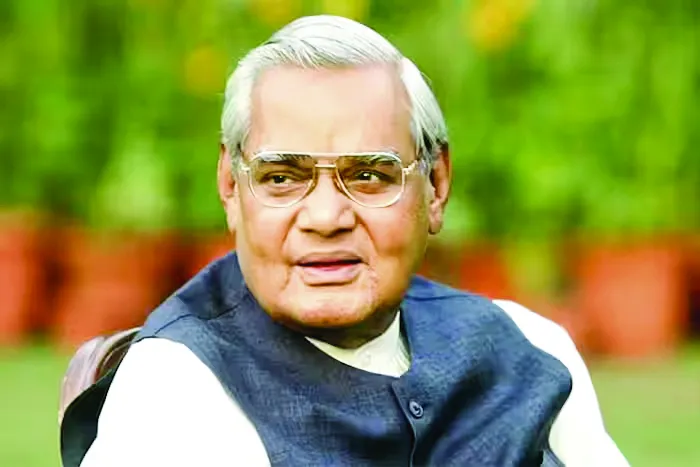Rajiv Gandhi’s birth had drawn Jawaharlal Nehru’s attention towards the need for a “competent” pandit to draw his grandson’s horoscope.
Rajiv was born on August 20, 1944 at Bombay (now Mumbai). His grandfather Jawaharlal Nehru was in Ahmadnagar Jail busy finishing The Discovery of India manuscript. Nehru had reportedly been mulling over Rajiv’s name for a few months. He even wrote to his sister Krishna Hatheesing to get a proper horoscope to be drawn up by a “competent” person for the baby. By mid September 1944, Nehru wrote to sister Vijay Lakshmi Pandit that if the family did not decide soon, “we shall have to call [him],,,the Nameless or the one with innumerable names.” Finally he was named as Rajiv after his grandmother, as Kamala and Rajiv were both names of the lotus flower.
Indira had moved to Bombay in March to live with her aunt Krishna as her husband Feroze and father were in prison. Dr V N Shirodkar of Cumballa Hill Hospital was a well known gynaecologist who had helped with the delivery. At about 5 am on August 20, 1944, Indira developed labour pain. Krishna Hatheesing wrote in a book titled, “Dear to Behold -An Intimate Portrait of Indira Gandhi”, how her niece was nervous and afraid.
When Nehru got the news of grandson, he wrote, “…The Birth of a new member of the family always makes one feel reminiscent and remember one’s childhood days and other births…. Nature goes on repeating itself, there is no end of its infinite variety and every spring is a resurrection, every new birth a new beginning, especially when that new born is intimately connected with us, it becomes a revival of ourselves and our old hopes centre round it.”
Nehru finally got to see his grandson in May 1945 when Germany had surrendered to the Allies forces on May 7 and in India, all political prisoners, including Nehru were released. This was the time Indira had devoted herself fully to look after Rajiv while Feroze Gandhi had started selling insurance. In November 1946, Feroze Gandhi joined the National Herald Newspaper in Lucknow, as managing editor.
Indira was a tender mother. Perhaps she was mindful of her own loneliness as a child, she supervised Rajiv-Sanjay’s meals, played with her and took them to a film if it was suitable for children. She also utilized services of a Danish governess Anna who had been secretary to scientist Jagdish Chandra Bose. Anna was a strict disciplinarian who believed in giving Rajiv and Sanjay cold showers, sunbathing, exercises and a diet essentially of vegetables and yogurt.
When Rajiv was two year old, he met Amitabh Bachchan who was barely four at Allahabad. In an interview, Amitabh had called his first meeting with Rajiv, “There was this fancy dress party on Bank Road (the Bachchans’ residence in Allahabad). Rajiv Gandhi was two years old and had been dressed up as a freedom fighter. Ma says he messed up his pants. We were all such tiny kids then, absorbed in our little games, that it didn’t seem such a big deal that Pandit Nehru’s grandson was in our midst.’
In another biography, Amitabh had traced the Gandhi-Bachchan family ties and said: ‘Rajiv and Sanjay studied in Doon School, Ajitabh and I were in Nainital… But our holidays fell around the same months. We’d hang out and swim every day at the pool of Rashtrapati Bhawan. The friendship continued. After schooling, Rajiv went off to Cambridge. Whenever he would be back home, we’d get together and exchange notes… When he started flying, I’d go with him to provide ballast at the Flying Club of Delhi. I’d glide there for hours… Panditji died. Mrs Gandhi became PM and the family moved to 1 Safdarjung Road, which was close to our home at 13 Willingdon Crescent. Rajiv, Sanjay, Ajitabh and I formed a closely knit group of friends.’
By Amitabh’s own admission, it was Rajiv and Sanjay who exposed him to avant-garde cinema at a young age through the European films that were specially screened for the Gandhi family at Rashtrapati Bhawan. ‘Rajiv and Sanjay Gandhi and I would attend screenings of The Cranes Are Flying and Czech, Polish and Russian films, which often packed in an anti-war message,’ Amitabh recalled.
When Amitabh was struggling to get a foothold in the Hindi film industry, comedy king Mehmood was his patron and there were many lighter moments. Mehmood’s brother, Anwar Ali, shared a flat with Amitabh and his sister, Zubaida, was also a close friend of the budding actor. In Mehmood: A Man of Many Moods, author Hanif Zaveri has reminisced, ‘Just before the release of Bombay to Goa, Amitabh had brought a very fair young friend to Mumbai. The friend had accompanied him from Delhi. Mehmood was on a high after taking Calmpose tablets, a drug to which he was addicted. Anwar introduced the young man to Mehmood, but in his state, he was unable to understand what was said. Mehmood took out five thousand rupees and handed it over to Anwar to give to Amitabh’s friend. A puzzled Anwar asked what the money was for. Mehmood said the young fellow was fairer and smarter than Amitabh. He could become an international star. The money was the signing amount for taking the young man in Mehmood’s next project.’
Anwar then had to reintroduce Amitabh’s friend to Mehmood, stressing that he was Rajiv, son of the prime minister, Indira Gandhi. Mehmood quietly took the money back. Both Amitabh and Rajiv had a good laugh. Many years later, when Rajiv became prime minister, Amitabh acknowledged Mehmood’s good judgement, saying that Rajiv was indeed an international star, but in the political arena, not on the silver screen.














